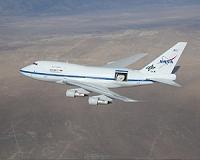 |
Paris, France (ESA) Feb 07, 2011 Astronomers gazing deep into the night sky to uncover the Universe's secrets will soon be able to discover even more star-births and planets thanks to new telescopes being built in Chile and Mexico drawing on space technology. Leading-edge production technology, developed by Italian company Media Lario Technologies for the extraordinary X-ray telescope on ESA's XMM-Newton spaceborne observatory, will be used for both the world's biggest radio telescope, the Atacama Large Millimeter Array Project (ALMA) in Chile, and the large single-dish Large Millimeter Telescope in Mexico. "Two of the key requests for ALMA were the precision of the panels and the need not to perform any special maintenance of the panels during the life of the telescope," explained Michele Suita, ALMA Programme Manager at Thales Alenia Space Italia. Accuracy better than the width of a human hair To provide ALMA's high accuracy and performance, all of the 3000 reflector panels forming the 25 antennas 12 m across that are Europe's contribution to the giant 66-antenna array are being built using the same precise electroforming technology used for XMM-Newton. The surface must not deviate by more than 25 microns from the ideal shape and by only eight microns for each of the 120 single panels that form each antenna. A human hair is at least 17 microns thick. "The panels developed by Media Lario Technologies were the only ones to fit the bill," added Mr Suita. Media Lario is producing the panels under prime contractor Thales Alenia Space Italia. To meet ALMA's stringent requirements, studies were performed under ESA's Technology Transfer Programme, with technical support from the European Southern Observatory.
Radio astronomy found evidence for Big Bang When ALMA is completed in 2012 its amazing giant array of 66 high-precision antennas will make it the biggest radio telescope on Earth. It will help scientists to study stars, planetary systems and galaxies, and provide insight into star births when the Universe was young. Media Lario's electroforming production technology was also selected for the 50 m-diameter single dish of the impressive Large Millimeter Telescope now under construction on the summit of the Sierra Negra, at an altitude of 4600 m in Mexico. Space spurs leading-edge technology developments The electroforming replication technology developed to produce the exceptional mirrors for XMM-Newton, has led to breakthrough technological advances in several non-space fields. The same space production technology is being used to make smaller, faster and cheaper microchips. When selected by ESA to produce the mirrors for the XMM-Newton, Media Lario were already known for their ability to realise highly accurate electroformed mirror assemblies. Following the delivery of the mirrors and the stunning X-ray images of our Universe from the space telescope, Media Lario's replication technology has been recognised worldwide. "The replica technique is extremely interesting when identical highly accurate panels or mirrors are to be produced, such as those required for large-diameter and highly accurate antennas and telescopes," explained Giovanni Nocerino, Media Lario Technologies President and CEO. "A circular symmetric main reflector can be realised by a set of rings with a number of identical panels in each ring. The advantage is even greater when many equal antennas are needed, as in the case of ALMA." "The key aspects of the ESO-ALMA antenna are the innovative design and technologies applied for the production of the different subsystems to achieve the state-of-the-art requirement of the project," explained Stefano Stanghellini, ESO ALMA Antenna Project Manager. "The panels produced by Media Lario Technologies are an additional new design feature of the European contribution to the ALMA array." "We have installed, recently, the first six antennas with our prime contractor Thales Alenia Space Italia in Chile, of which the first two will go through acceptance testing until February 2011. The rest of the antennas will then be installed in the course of 2011 and 2012," added Dr Nocerino.
Share This Article With Planet Earth
Related Links XMM-Newton Space Telescope News and Technology at Skynightly.com
 German Receiver GREAT Installed On SOFIA For The First Time
German Receiver GREAT Installed On SOFIA For The First TimeBonn, Germany (SPX) Feb 04, 2011 On 21 and 22 January 2011, the German Receiver for Astronomy at Terahertz Frequencies, GREAT, was installed on Stratospheric Observatory For Infrared Astronomy, SOFIA, for the first time. The installation and first tests were successful. Further tests will follow before the first scientific flight of SOFIA with GREAT on board takes place in April 2011. "Thanks to all those who partic ... read more |
|
| The content herein, unless otherwise known to be public domain, are Copyright 1995-2010 - SpaceDaily. AFP and UPI Wire Stories are copyright Agence France-Presse and United Press International. ESA Portal Reports are copyright European Space Agency. All NASA sourced material is public domain. Additional copyrights may apply in whole or part to other bona fide parties. Advertising does not imply endorsement,agreement or approval of any opinions, statements or information provided by SpaceDaily on any Web page published or hosted by SpaceDaily. Privacy Statement |